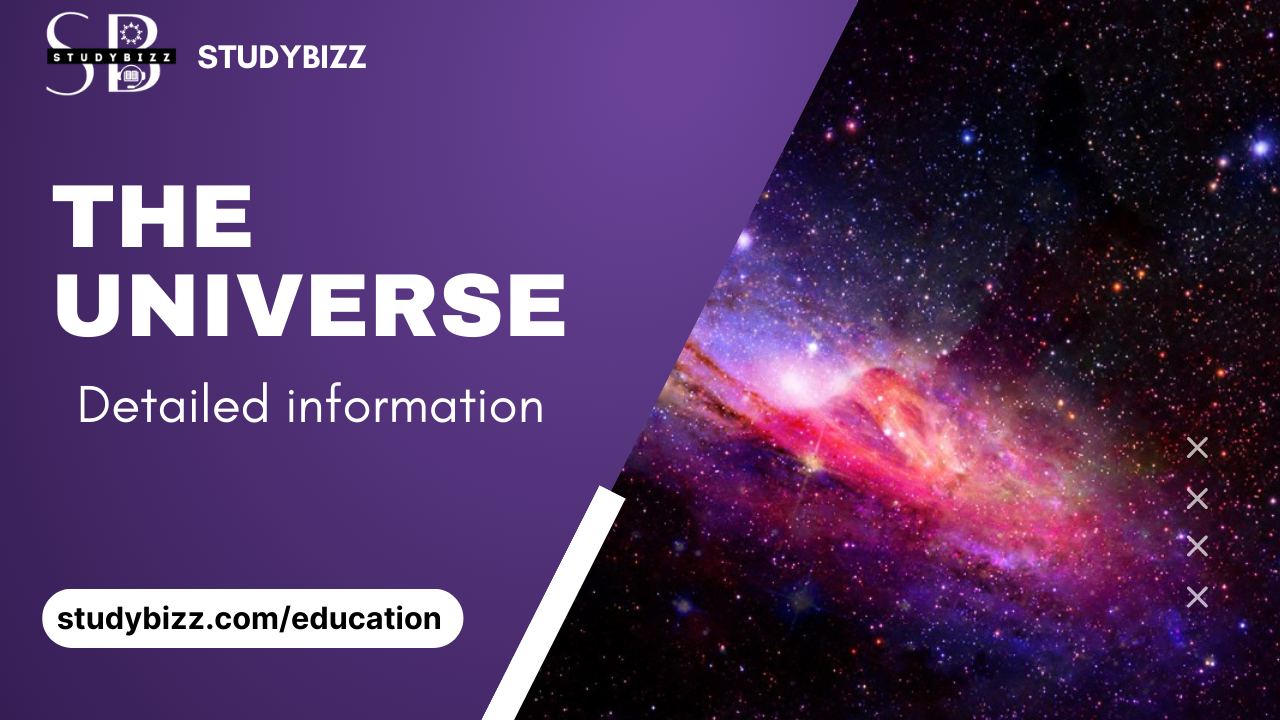The word “universe” comes from the Latin word ” universum “, which means “the whole”, or “everything that exists”. The universe is the combination of space and time and including planets, stars, galaxies, and all other forms of matter and energy. The universe is everything that exists. It includes all matter and energy, as well as the physical laws and constants that govern them. The universe is often defined as being all of space and time, and everything that exists within it, including all planets, stars, galaxies, and other forms of matter and energy. It is also thought to include all possible parallel universes that may exist. The universe is vast and is believed to be constantly expanding, with the size and age of the universe being difficult to comprehend due to its enormous scale. Scientists are still working to understand more about the universe and its origins, and many mysteries about its nature and evolution remain to be explored.
Age of the Universe :
The age of the universe is estimated to be around 13.8 billion years. This estimate is based on several lines of evidence, including the observed expansion of the universe, the cosmic microwave background radiation, and the ages of the oldest known objects in the universe. The age of the universe has been the subject of much study and discussion among scientists, and it is still an active area of research.
Theories about universe :
There are many different theories about the nature of the universe. Some popular ones include the Geocentric, Heliocentric, Big Bang theory, Red shift theory, Steady state theory, Pulsating theory, the theory of relativity, and the theory of cosmic inflation. Other theories propose the existence of multiple parallel universes, or the idea that the universe is a simulation. These are all areas of active research and debate in physics and cosmology.
Geocentric :
The geocentric model of the universe is the belief that the Earth is at the centre of the universe and everything revolves around it. This model was widely accepted in ancient times, but it has been largely rejected in favour of the heliocentric model, which posits that the Sun is at the centre of the solar system and the Earth and other planets revolve around it. The geocentric model was ultimately rejected due to a lack of evidence supporting it and the availability of more accurate models that were able to explain the observed movements of celestial bodies more accurately.
Heliocentric :
The heliocentric model of the universe is the belief that the Sun is at the centre of the solar system and the Earth and other planets revolve around it. This model was proposed by the Polish astronomer Nicolaus Copernicus in the 16th century, and it was later refined and supported by the work of other scientists, such as Johannes Kepler and Galileo Galilei. The heliocentric model was able to explain the observed movements of celestial bodies more accurately than the geocentric model, which posits that the Earth is at the centre of the universe and everything revolves around it. The heliocentric model is now widely accepted as the correct description of the solar system.
Big Bang Theory :
The Big Bang theory is the prevailing theory of the origin and evolution of the universe. It proposes that the universe began as a singularity, an infinitely hot and dense point in space and time, around 13.8 billion years ago. From this singularity, the universe expanded and cooled, eventually forming the first elements and eventually the first stars and galaxies. The theory is supported by a wealth of scientific evidence, including the observed expansion of the universe, the cosmic microwave background radiation, and the abundance of light elements in the universe. It is widely accepted by the scientific community as the most accurate explanation for the origin and evolution of the universe.
Red shift Theory :
The redshift theory is the observation that light from distant objects, such as galaxies, appears redder (shifted towards longer wavelengths) than it would if the object were stationary. This phenomenon is known as redshift. One explanation for redshift is the Doppler effect, which occurs when an object is moving away from an observer and the wavelengths of the emitted light become longer as a result. In the case of the universe, the redshift of light from distant objects is often interpreted as evidence that the universe is expanding. This theory is supported by a number of observations, including the observed expansion of the universe and the cosmic microwave background radiation. The redshift theory is an important part of the Big Bang theory, which is the prevailing theory of the origin and evolution of the universe.
Steady State Theory :
The steady state theory of the universe is a cosmological model that proposes that the universe has always existed and that new matter is continuously created to form new galaxies, stars, and planets. This theory was developed in the mid-20th century as an alternative to the Big Bang theory, which proposes that the universe began as a singularity around 13.8 billion years ago. The steady state theory was supported by some scientists because it did not require the universe to have a beginning, and it was able to explain the observed redshift of light from distant objects as a result of the continuous creation of new matter. However, the steady state theory was ultimately rejected in favour of the Big Bang theory due to a lack of evidence supporting it and the availability of more accurate models that were able to explain the observed properties of the universe more accurately.
Components of Universe :
The components of the universe can be broadly classified into two categories: Matter and Energy.
Matter: Matter is the “stuff” that makes up the universe and includes all objects that have mass and occupy space. It is made up of tiny particles called atoms, which are the basic building blocks of matter. Atoms are made up of even smaller particles called protons, neutrons, and electrons. There are various types of matter, including ordinary matter, dark matter, and antimatter.
Ordinary matter: This is the matter that makes up the objects we can see and touch, such as stars, planets, and galaxies. It is made up of atoms that are composed of protons, neutrons, and electrons. Ordinary matter is thought to make up only about 5% of the total matter and energy in the universe.
Dark matter: Dark matter is a type of matter that is thought to make up about 25% of the total matter and energy in the universe. It is called “dark” because it does not interact with light, making it invisible to telescopes. Dark matter is thought to be made up of exotic particles that do not interact with light, making it invisible to telescopes.
Antimatter: Antimatter is a type of matter that is composed of antiparticles, which are particles that have the same mass as particles of ordinary matter but have opposite charge and other fundamental properties. When a particle of antimatter comes into contact with a particle of matter, they annihilate each other and produce energy.
Energy: Energy is the fundamental substance of the universe and is present in various forms, such as light, heat, and radiation. It can be transformed from one form to another and can be converted into matter and vice versa. Some examples of energy include the energy of motion (kinetic energy), the energy of position (potential energy), and the energy of the electromagnetic field (electromagnetic energy).
Dark energy: Dark energy is a type of energy that is thought to make up about 70% of the total matter and energy in the universe. It is called “dark” because it is not visible and does not interact with light. Dark energy is thought to be responsible for the observed acceleration of the expansion of the universe. The exact nature of dark energy is still not fully understood and is an active area of research in astrophysics.
Milky Way :
The Milky Way is a barred spiral galaxy that is located in the Local Group of galaxies, a group of about 50 galaxies that are bound together by gravity. It is the second-largest galaxy in the Local Group, after the Andromeda Galaxy. The Milky Way is home to our solar system, which includes the Earth and all the other planets, as well as many other celestial objects such as stars, nebulae, and star clusters.
The Milky Way is thought to be about 13.5 billion years old and is approximately 100,000 light-years in diameter. It is estimated to contain between 100 billion and 400 billion stars, as well as a vast amount of gas, dust, and other material. The center of the Milky Way is a region called the galactic center, which is thought to contain a supermassive black hole with a mass of about 4 million times that of the Sun.
The Milky Way is part of the Local Group of galaxies and is surrounded by several smaller satellite galaxies, including the Large and Small Magellanic Clouds. The Milky Way is also part of the Virgo Supercluster, a group of about 100 galaxy clusters and groups that are bound together by gravity.





Leave a Reply